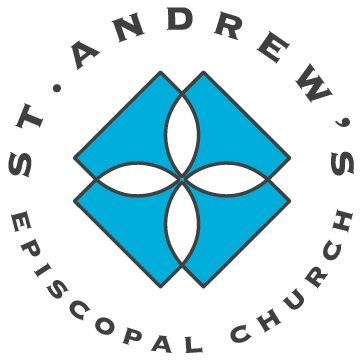December 16, 2018
/3 Advent
Zephaniah 3:14-20; Canticle 9 (Isaiah 12:2-6); Philippians 4:4-7; Luke 3: 7-18
The Rev. James M.L. Grace
In the Name of God: Father, Son, and Holy Spirit. AMEN.
When writing sermons, clergy might spend lots of time scratching their heads, trying to figure the first line of a sermon that will capture people and draw them in immediately. The first line of a sermon should be witty, perhaps unexpected, it should arouse curiosity. In that spirit I have prepared an opening line for this sermon that is sure to dazzle and amaze you. Are you ready to hear it? Are you sure?
Here it is: Today is the third Sunday of Advent. How’s that for unconventional, out of the box thinking? Admittedly beginning a sermon with the opener “Today is the third Sunday of Advent” is not very compelling. Most of us don’t even know what Advent is, except for this strange season in the church where we light candles on a wreath, wear blue, and wait for Christmas.
The word “Advent” simply means the arrival of a notable person, thing, or event. I learned that on Google this week. An example of the word’s use, Google told me, was this “the advent of television.” Advent is also the name of a company that used to make stereos and stereo speakers. I once owned a pair of “Advent” stereo speakers. I used to listen to an industrial/heavy metal band called “Ministry” super loud on my “Advent” speakers, perhaps a strange foreshadowing of my future vocation.
Anyway in the church “Advent” is a four week season that always occurs the four weeks before Christmas. The first mention of Advent dates to about 300 AD, and it gradually developed into a season that stretched across the month of December. So that’s Advent. But what about this wreath over here with candles and evergreen? It’s called an “Advent wreath.” The Advent wreath appeared much later, emerging in Germany in 1839.
The Advent wreath was invented by a Lutheran minister working at a mission for children. One day he created a wreath out of the wheel of a cart. He placed twenty small red candles and four large white candles inside the ring. The red candles were lit on weekdays and the four white candles were lit on Sundays.
Eventually, the Advent wreath was created out of evergreens, symbolizing everlasting life in the midst of winter and death. The circle reminds us of God’s unending love and the eternal life God makes possible.
Today we have five candles on the wreath: three blue, one pink, and one white. What do they mean? On this wreath a candle is lit for each week that passes in the season of Advent, and today the third candle of wreath is lit, and it’s as you might notice, the pink candle.
As you probably suspect the pink candle is there not because we couldn’t find a fourth blue candle and just had to make do with what ever oddly colored candle we could find in the Altar Guild Sacristy. The third candle is there to represent the third Sunday of Advent, which is often called Gaudete Sunday. Gaudete is Latin for the word “rejoice”, and Gaudete Sunday takes its name from the first line of Philippians, in which Paul writes: “Rejoice in the Lord always; again I will say, rejoice.” In Latin, that verse is translated as Gaudete in Domino semper: iterum dico, gaudete. I learned that from Wikipedia!
The point is that this is a Sunday set aside for one reason: to rejoice. Why? I think because the act of rejoicing does not come naturally to us. Most of us tend to be preoccupied with what is wrong, or broken, in the world. We see all the negativity and anger, and sometimes that doesn’t leave us with much to rejoice about. Family gatherings this time of year might dredge up old dysfunctional, painful behavior that confuses us, and sometimes hurts us.
The reason why Paul probably wrote the words “Rejoice in the Lord always; again I will say, rejoice” is probably not because the church to whom he was writing was busy rejoicing. Probably this church in Philippi to whom Paul said “rejoice, again I will say rejoice” was not being very joyful. Sadly churches, who should have the market on joy, sometimes feel anything but. I am reminded of a sermon I heard long ago in which the priest, with absolutely no joy in his heart said “Let us always remember to be joyful in the Lord.”
I want you to think about what you are truly joyful for today. What gives you reason to rejoice? And I want your to take a pencil from the pew racks – and write down what you are joyful for. Write it on the service bulletin, and tear it off. You are not allowed to write “family” or “church.” Those are great things to be joyful about – but they are easy answers. I want you to think deeper. What are you really joyful about today. Write it onto your bulletin, and then tear it off. When the collection plate comes by you, place your paper into it. The plates will come to the altar, and we will offer to God what we are joyful for today. “Rejoice in the Lord always; again I will say, rejoice.” AMEN.

